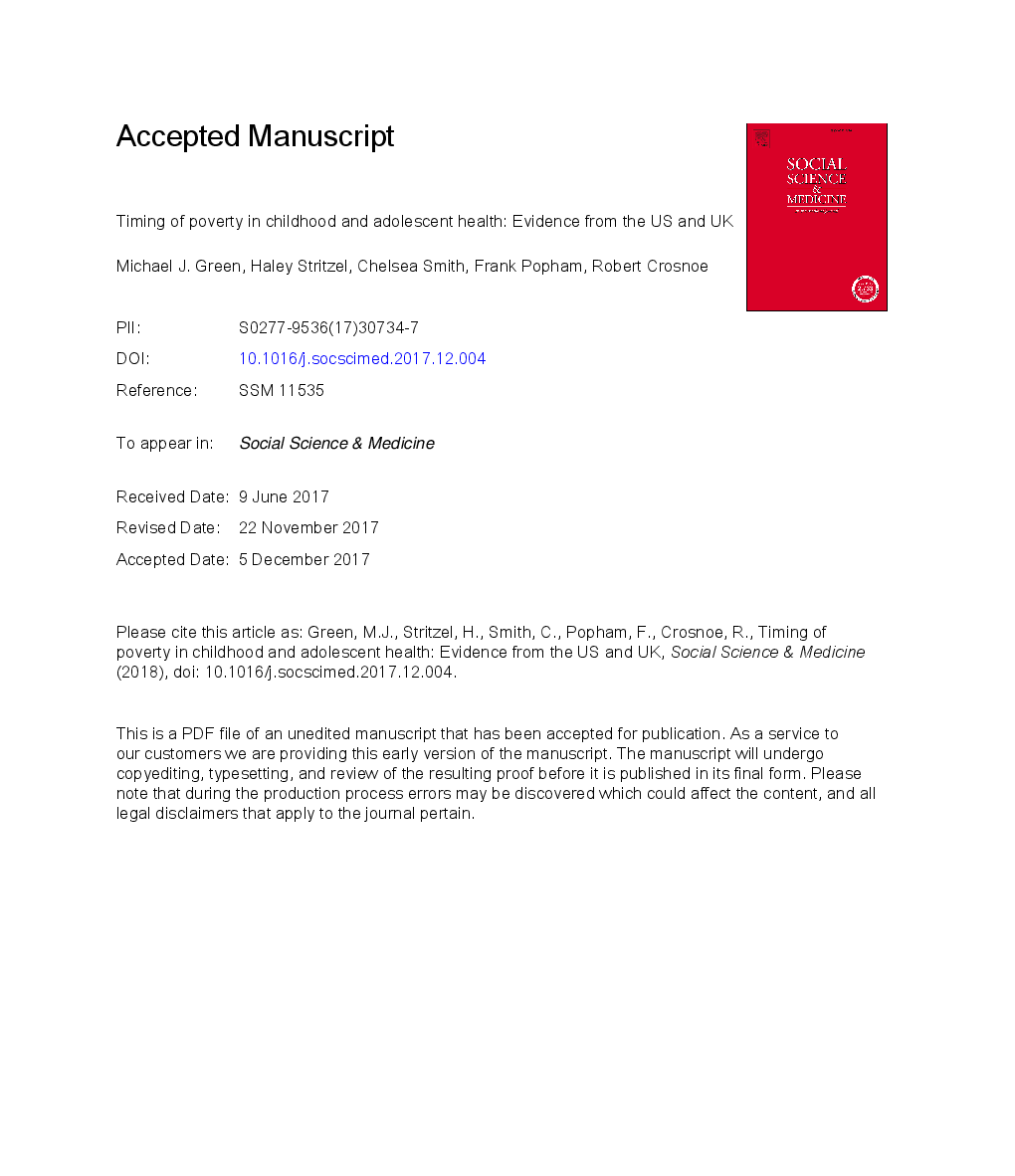ترجمه فارسی عنوان مقاله
زمان بندی فقر در دوران کودکی و سلامت نوجوانان: شواهد از سوی ایالات متحده و انگلستان
عنوان انگلیسی
Timing of poverty in childhood and adolescent health: Evidence from the US and UK
| کد مقاله | سال انتشار | تعداد صفحات مقاله انگلیسی |
|---|---|---|
| 129574 | 2018 | 30 صفحه PDF |
منبع

Publisher : Elsevier - Science Direct (الزویر - ساینس دایرکت)
Journal : Social Science & Medicine, Volume 197, January 2018, Pages 136-143
ترجمه کلمات کلیدی
سلامت نوجوانان، سیگار کشیدن، دوره زندگی، درآمد، فقر، بین المللی،
کلمات کلیدی انگلیسی
Adolescent health; Smoking; Life course; Income; Poverty; Cross-national;

